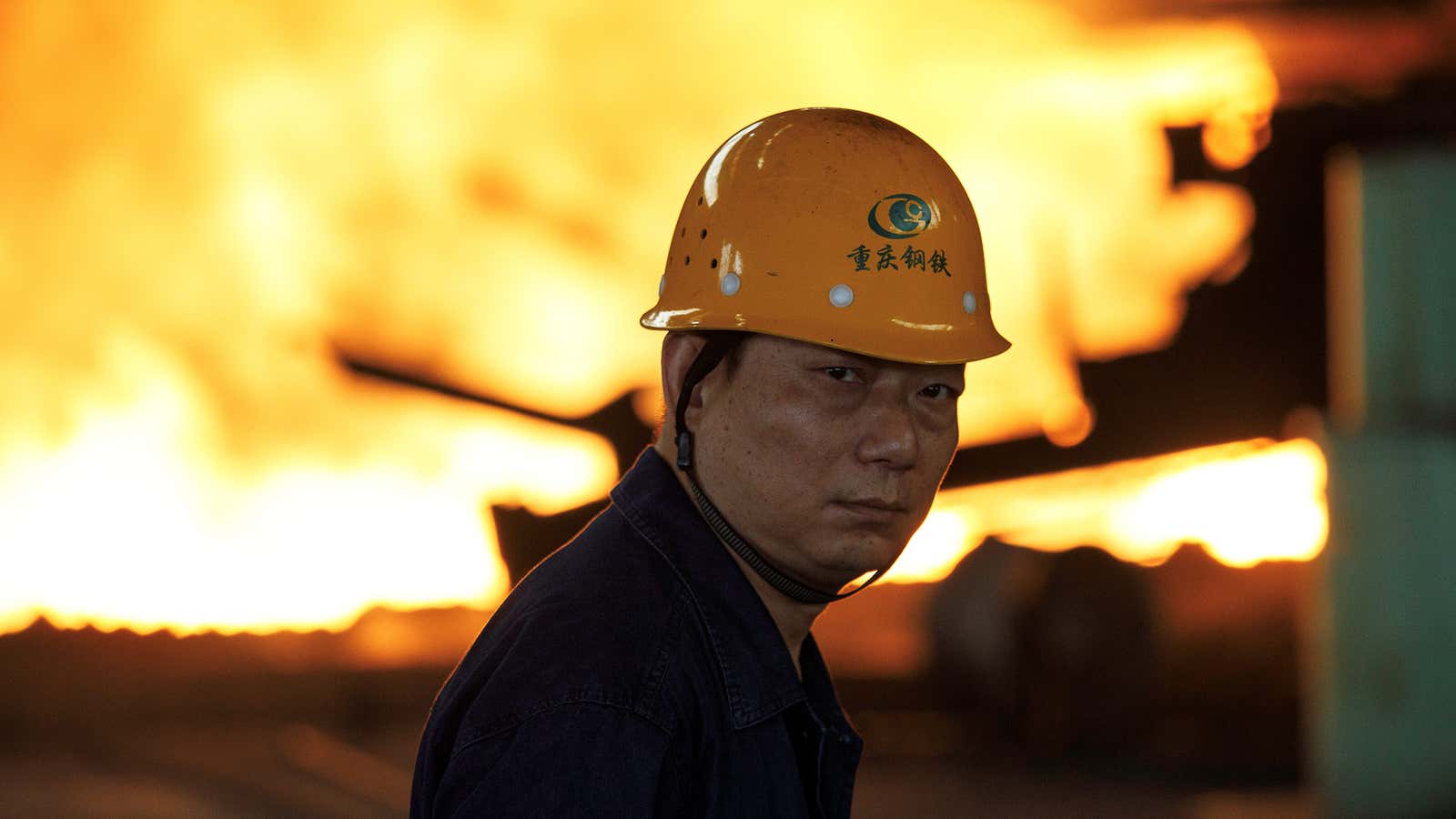China is pouring cash into infrastructure, from green energy projects to electrical grids and airports, in an array of stimulus measures that are rippling through global financial markets. It’s similar to the playbook China used after the last global recession.
That spending is showing up in the Baltic Dry Index, a benchmark for the cost of shipping commodities like iron ore and coal, which has risen to its highest level since September 2019. The index plunged earlier this year as much of the world economy shut down to contain the spread of Covid-19, but it has since soared to levels that pre-date the pandemic. “It’s doubled in two weeks, which is quite extraordinary,” says Caroline Bain, chief commodities economist at Capital Economics. “China’s imports of metals and particularly iron ore have been growing very strongly ever since they came out of their lockdown.”
Chinese authorities earmarked spending for green infrastructure, but there are signs there weren’t enough of those projects to absorb all the money being thrown at them, Bain said. So a large chunk of the resources are going into everything from airports and bridges to the electrical grid, in addition to power generation that uses older technologies.
China has an outsize impact on metal prices because it consumes about half of the world’s supply of those commodities. In contrast, the country takes down about 13% of the oil that’s produced, meaning it leaves a smaller mark on global energy prices.
Chinese mills, meanwhile, munch on a prodigious amount of iron to make steel, whereas US and European steel mills often use an electric-arc process that doesn’t rely on the ore.
The measures China has announced to support its economy, at about 5% of gross domestic product, are smaller than those declared by some other nations. The US is spending around 11% of GDP, with more potentially on its way, while France is dishing out about 6%, according to International Monetary Fund data. But the composition is different. Most large economies are spending money to prop up households and consumption, while China is spending it cash on hard infrastructure, Bain said.
China, of course, has been here before—the country spent billions of dollars on infrastructure after the credit bubble popped in 2008, which led to a heavy buildup of public debt among state-owned enterprises and local governments, with total debt rising to more than 300% of GDP by some measures. While this year’s publicly announced spending suggests Chinese officials are trying to avoid the fallout of last infrastructure binge, surging metals prices indicate the country is reusing the old playbook more than it has perhaps let on. That’s one of the reasons China is among the very few countries whose economy isn’t expected to contract this year.
“Ultimately their main plan is keeping the population employed and a lot of lofty ideas go out the window when it looks like the economy could contract quite severely,” Bain said. “My impression is, and certainly from the commodities demand we’re seeing, is that it’s very much old-style infrastructure spending going on, regardless of the debt consequences.”
